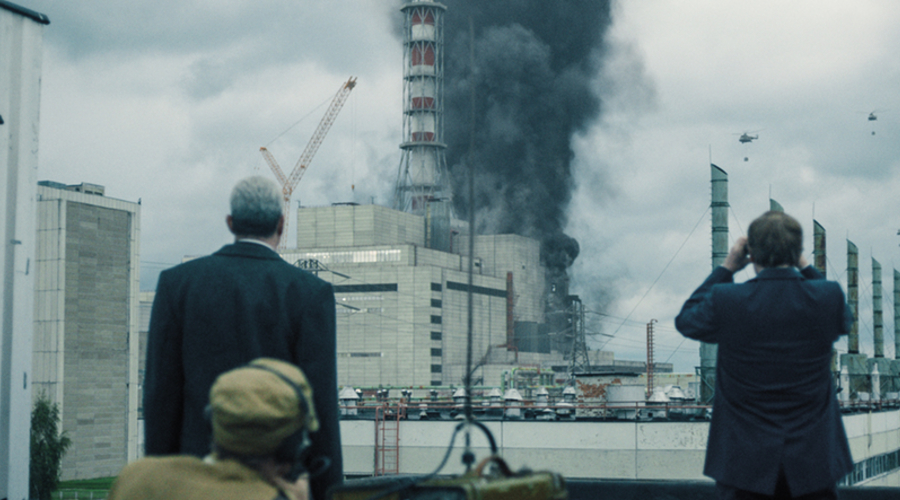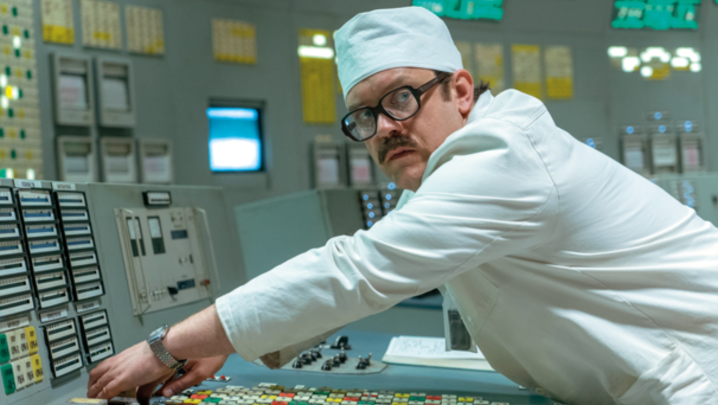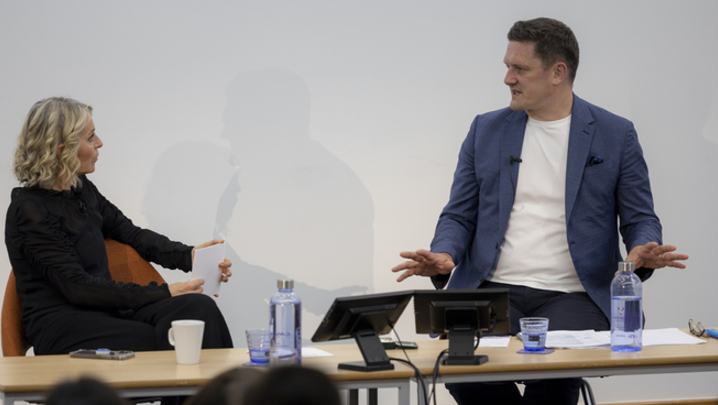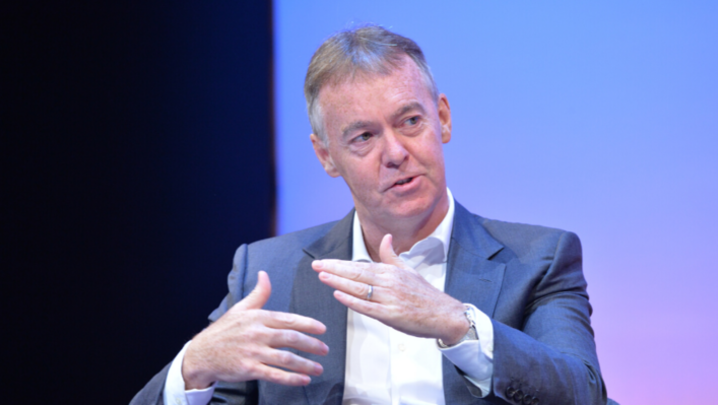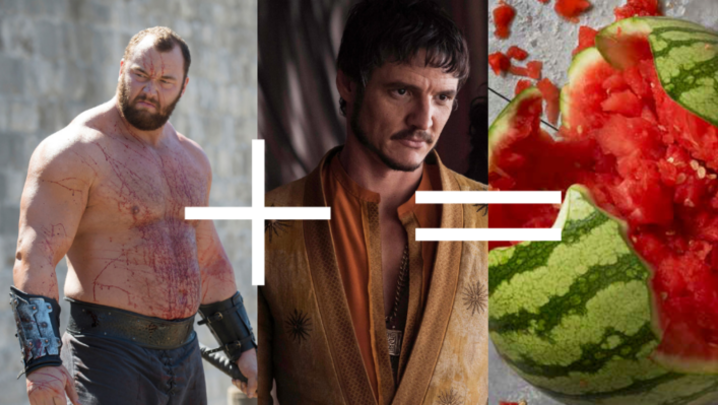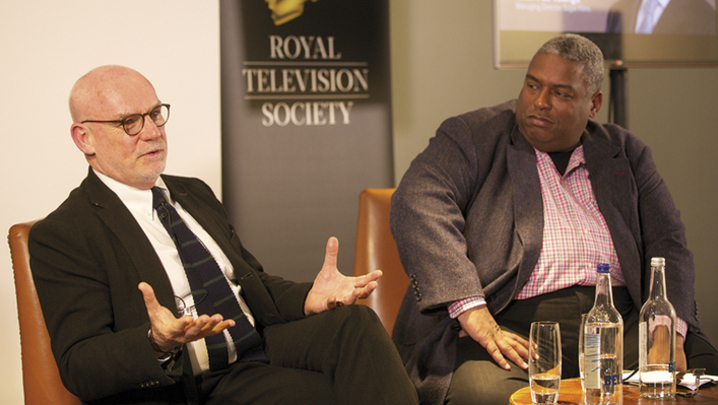Caroline Frost learns how the creator of Sky Atlantic’s Chernobyl set out to tell the disaster’s story from the perspective of the people caught up in it
“I wanted to make a drama unlike anything else, because Chernobyl was unlike anything else. I wanted it to be as unique as the event itself.” That was the ambitious goal set by writer and producer Craig Mazin for his epic mini-series about the Soviet power plant that caught fire on 26 April 1986, triggering the most disastrous nuclear accident in history. And Mazin has succeeded.
While one of the show’s stars, Jared Harris, compares it tentatively to The China Syndrome and other disaster thrillers, he adds: “There’s the Godzilla myth in there, too, but I think that Craig has crossed lots of different genres.”
Sure enough, watching the first two hours of the five-hour drama is an absorbing, overwhelming experience. It brings to mind blockbuster sci-fi on a Christopher Nolan scale – except that Mazin’s story is all horribly true.
The budget is all over the screen, from the pedigree cast – Harris, Stellan Skarsgård, Emily Watson, Jessie Buckley – and explosion scenes filmed at a sister reactor in Lithuania, to the recreation of Pripyat, the town, now in Ukraine, where so many of the plant workers lived and where children were still playing outside days after the catastrophe.
The huge production is the beneficiary of Sky’s partnership with HBO. Mazin says he was amazed that he was allowed to do so much: “We started with HBO, but it became clear that this was bigger than any one network, so we reached out to Sky and it rescued us. We were based in London, and our prep was in Lithuania. We also shot in Latvia and a little bit in Ukraine. It’s a story about Europe. We only had two Americans involved.”
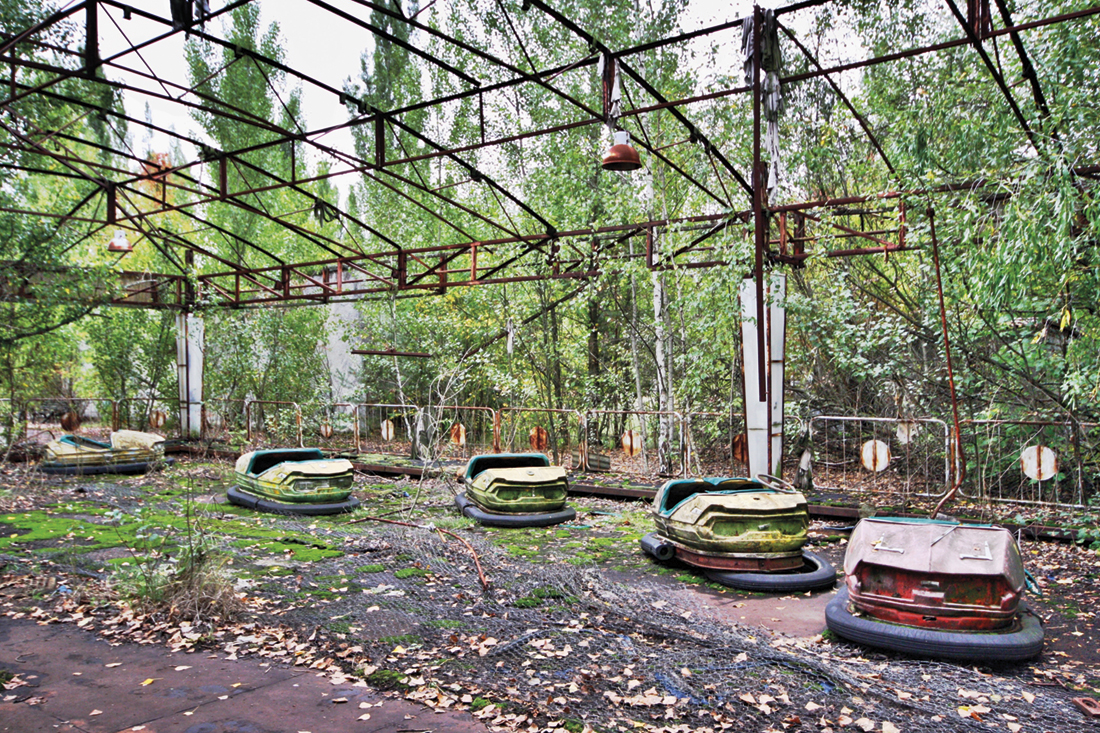
Moved to research the accident after reading an article in the New York Times, Mazin ended up dedicating years to creating the project, wading through academic papers by historians and scientists, as well as more emotional first-person accounts brought together in the book Voices from Chernobyl.
He remembers: “I even came across a documentary account by a man directly involved in the cleaning of the roof.”
Mazin is confident that he has steered clear of any enduring Russian disinformation about the accident, which was hushed up at the time by the Soviet government: “There is some Soviet nostalgia, but Russians – and, certainly, Ukrainians – are aware that Chernobyl hurt them. There was a government that caused this, but it no longer exists.
"It’s not just a TV drama. We all, in many ways, live in the shadow of the mushroom cloud"
“Instead, I have sensed from the people there a general desire that we not be over the top and do the usual American thing of making the Soviets into cartoons. They were banal men in suits dealing with half-information, and following orders. They weren’t moustache-twirling villains. Gorbachev was afraid; they all were.”
One of the biggest challenges of bringing the story to screen has been the enduring arguments over the final death toll; estimates range between the Soviet official figure of 31 up to a 2007 Russian publication that puts it nearer the million mark.
Kate Brown, professor of science, technology and society at MIT and author of Manual for Survival: A Chernobyl Guide to the Future, believes it was the cause of 150,000 deaths in Ukraine over 30 years. She explains: “The biggest misconception is that it was an accident that happened in one place in the past with a clear beginning, middle and end.”
While she welcomes a drama that brings the story to young people who weren’t around when the reactor blew, her caveat is that “emphasising the drama of the event – firemen, helicopter pilots – works like a broom to sweep away the larger tragedy still unfolding.… It’s not just a TV drama. We all, in many ways, live in the shadow of the mushroom cloud.”
Adam Higginbotham, author of Midnight in Chernobyl: The Untold Story of the World’s Greatest Nuclear Disaster, is equally dismissive of both the tiny figures and the massive ones. “There is an awful lot of scaremongering about this, and it sells an awful lot of papers, but the scientific evidence doesn’t support it. It’s much more important to concentrate on the fact that hundreds of thousands of people had their lives completely overturned by the accident.”
Craig Mazin agrees that there is just no way to marry the competing figures and narratives. Instead, he offers them all at the end of the series, and, in addition, has created a podcast to accompany the series. He uses this to “talk about what I changed and why; what was real, what wasn’t. I hold myself accountable to truth and fact, because it’s incredibly important.”
He points out, however, that his aim is not to provide viewers with homework. “It’s my job to make people feel something through drama. I want to make people feel a true, empathic experience with the human beings who went through this. Telling their stories is one of the great joys of this.”
"‘It was deliberately non-Hollywood’"
His star Jared Harris, who plays Valery Legasov, a Soviet scientist charged with investigating the scale of the disaster, much to the dissatisfaction of his Politburo superiors, agrees that the success of the drama is dependent on us caring for the individuals involved.
“Because of the scale of it, we didn’t want the Disney version. The story is big enough without needing in any way to be sensationalised,” he says. “Instead, it was all about the production design, the clothes, the cars… every detail. It was deliberately non-Hollywood, no glamour. It was deliberately understated, as was the truth of the time.”
Higginbotham comments: “It’s important to understand what the people of Pripyat lost through the explosion. It was a wonderful place to live, and people who lived there and worked at the plant were young and ambitious and excited to be involved in something that represented the future of the Soviet Union, the future of the technology they were working with.
“It was overshadowed by what happened subsequently, but many still have pride in what they were doing. They would all say we should continue to work with nuclear power, we just have to be careful with what we’re handling.”
Mazin is determined not to make any comments against nuclear power with this series. “There is no nuclear power plant functioning in the West capable of doing what Chernobyl did. There are great benefits to nuclear power. This is not an anti-nuclear story. I am sympathetic to their concerns about preconceptions, but there’s nothing I can do within the show itself, which is about the worst possible situation.”
This approach is supported by Higginbotham. “People use Chernobyl as a means of portraying nuclear energy as a Pandora’s box that should never have been opened. I think it’s important to understand that this was an event that could only have happened in the time and location it did, after an era of stagnation in the Soviet Union, [with] a reactor that was badly designed and deeply unstable.
“This is really a classic story of mankind’s hubris, overconfidence in technology, human ambition, overreaching cowardice and bravery, stupidity and cover-up – it has a timeless resonance on all sorts of levels.”
Inevitably, Mazin and his cast see political parallels with the world today. “I want viewers to question our relationship with the truth,” says the producer. “I want people to start thinking more critically.
“I want them to ask who benefits from certain narratives and agendas. There is a global war on the truth – we’re in the middle of it right now. I want people to experience the cost of going along with the lie, and watch what happens, to people’s bodies, to people they love, their governments. I want them to see what happens to the planet.”
Stellan Skarsgård adds: “A system that considers itself perfect is prone to start hiding truths that aren’t comfortable, and that is always lethal. It could be a Soviet system or a religion, but anything that considers itself perfect is dangerous.’
Ultimately, however, it is for the people of Pripyat and the disaster’s immediate victims, survivors and their loved ones that Mazin feels the most responsibility. “We’re just beginning to show it to people now. I was very gratified – at the first screening, a gentleman came up to me and said, ‘It was like I was there again.’
“I was so pleased because we’ve come at it from a place of great respect. I have no respect for the Soviet government, but I have boundless respect for the people who lived there, because the life of Soviet citizens was hard.
“The sacrifices they made were extraordinary, throughout the 20th century, and I would like them to know that everybody who worked on this production wanted to pay tribute to them, their cultures and communities.”
Chernobyl airs on Sky Atlantic on 7 May.

